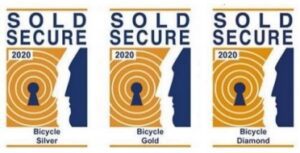Banks caught between a rock and a hard place

In today’s uncertain global economic climate, financial institutions (FIs) such as banks are exposed to a wide variety of risks with little room for error.
A recent report from Featurespace, a provider of enterprise financial crime prevention software, said that the financial sector is trapped between increasing financial crime – especially scams – and the perception that any solution will bring added complexity and compliance headaches.
The report, titled The State of Fraud and Financial Crime in the US, said that while 62% of global financial institutions reported a year-over-year increase in fraud volumes, they are also hesitant to take action due to perceived regulatory and technological complexities.
According to Carolyn Homberger, president of the Americas at Featurespace, many bank risk managers are not necessarily committing mistakes outright. Instead, as the report pointed out, they are caught between a rock and hard place.
“Our report found that two out of three executives viewed the adoption of innovative solutions to improve fraud detection and anti-money laundering (AML) compliance as a high priority, but over one in three cited concerns about perceived complexity of integrating new technologies,” Homberger told Corporate Risk and Insurance. “Fifty-nine percent of those surveyed in our report said they were adopting a ‘wait and see’ approach until newer technologies are ‘widely accepted’ or ‘well developed.’ This points to an industry that is in a kind of deadlock when it comes to combating fraud and financial crime. This benefits no one as much as the criminal, and impacts no one as much as the consumer who sees their confidence, trust and choice diminished further with every attack.”
Smaller FIs, such as those between US$5 billion and US$25 billion in assets, are at larger risk of fraudulent transactions. Small banks and credit unions are often less equipped to counter or sustain increasingly sophisticated attacks – with the study saying that almost three quarters (71%) of smaller institutions reported increased fraud rates.
Furthermore, 68% of smaller FIs reported an increase in the dollar cost of fraudulent transactions, in contrast with larger FIs, or those with more than US$500 billion in assets, where only 48% reported an increase. In terms of the overall false positive rate, 48% of smaller FIs reported an increase, versus 39% for larger FIs.
Despite the significant risks, Homberger said that the study showed the industry remains in a deadlock when it comes to combating fraud and financial crime.
“The data – alongside our own experience – shows there’s an appetite for more innovative solutions able to address the ever-increasing challenges posed,” Homberger said. “Yet, it appears some institutions continue to wait before taking the leap and benefiting from the significantly reduced fraud losses promised to smart-thinking first movers.”
For banks to become more effective at combating modern fraud tactics, Homberger emphasized the need for collaboration between leadership across various business sectors.
“Like any business, banks can be siloed organizations,” Homberger said. “Leaders across fraud prevention, AML, and data science must continue to collaborate to create long-term fraud prevention plans that are custom to each bank. There is no one-size-fits-all approach to fraud, and a diverse array of perspectives are needed in order to create an effective strategy.”
With fraudsters adopting more sophisticated methods, banks’ risk management and security teams must also step up their game to keep up with increasingly tech-savvy adversaries.
“We know that technology is the solution – financial institutions using AI and machine learning report the lowest levels of financial crimes, including fraud,” Homberger said. “For bank leaders, it’s now vital that they adopt technology that helps drive down fraud risks to create long-term, sustainable fraud prevention practices.”
Despite having the second-largest banking sector in the world, financial institutions in the US have struggled to outsmart fraudsters and criminals. According to Homberger, this is partly due to the lack of standardized reporting to analyze financial crime trends in the market today.
“Furthermore, banks need technology that enables them to drive down fraud rates and ensure that fraud attacks are less successful than they are now,” Homberger said. “The pervasiveness of fraud is not likely to change, and as fraudsters become more fluid and adaptable, they will look to find weak points in any banks’ fraud prevention scheme. Implementing technology that helps identify fraudulent behavior will be more advantageous than traditional, rules-based fraud prevention approaches, and create better anti-fraud practices for years to come.”





